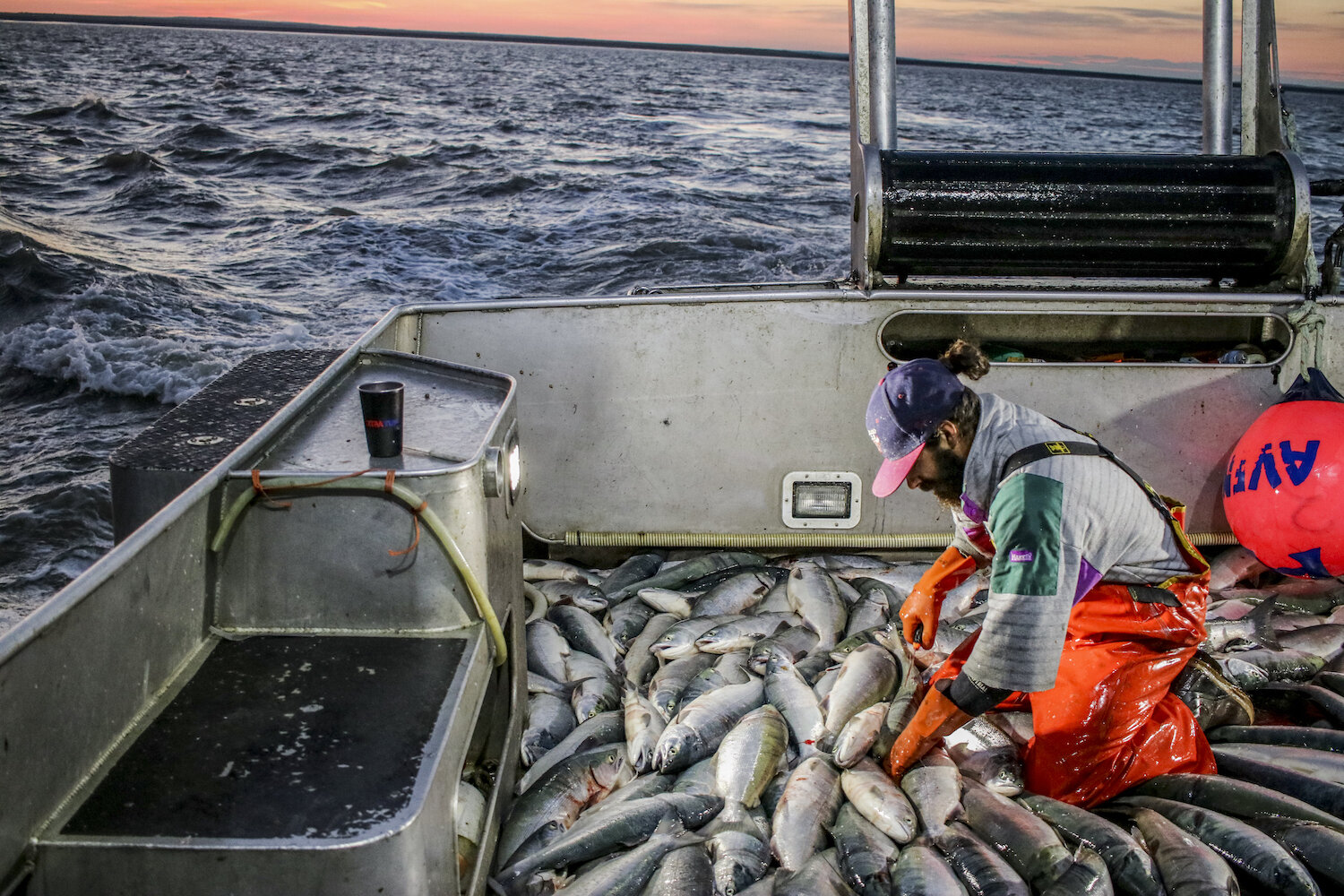
The pebble mine threat
Wrong Mine, Wrong Place.
At the headwaters of Bristol Bay lies a massive low-grade sulfide ore body, known as the Pebble deposit. The Pebble Limited Partnership is pushing to develop the deposit and build the Pebble Mine despite public and political opposition and peer-reviewed scientific research showing that large-scale mining in Bristol Bay would have irreversible impacts on Bristol Bay’s world-class salmon populations.
There are three inherent facts that make Pebble Mine the wrong mine in the wrong place:
The Pebble deposit is an extremely low-grade ore body; low-grade ores require massive open-pits.
The Pebble deposit is located in a seismically active zone, which increases the likelihood of major infrastructure failing (including tailings dam failures).
The Pebble deposit is an acid-generating sulfide deposit, meaning that it will create acid mine drainage (toxic to fish).
The Pebble Partnership has promised “no net loss” of fish and “coexistence” between salmon and mining, however, these promises are not based on any facts. The Exxon Valdez oil spill, Deepwater Horizon disaster, and Mount Polley Mine dam failure are all costly examples showing that it’s not a question of if an accident will happen at the Pebble Mine site, but a question of when.
The Pebble Partnership
The Pebble Limited Partnership was once a consortium of some of the world’s largest mining corporations, including London-based Anglo American. Over the years due in part to pressure from investors and Bristol Bay residents, other investors in the Pebble Limited Partnership have walked away from the Pebble Mine, including Rio Tinto, Mitsubishi, and First Quantum Minerals. They all concluded that the Pebble Mine’s risks far outweighed any potential gains. Today, the Pebble Limited Partnership consists solely of Canadian-based Northern Dynasty Minerals; a junior mining company that has never developed a mine before.
In its permit application, the Pebble Partnership proposed to:
Mine a 1-mile-wide and quarter-mile deep pit;
Destroy over 3,000 acres of wetlands and more than 21 miles of salmon streams at the mine site located in the headwaters of Bristol Bay’s world-class salmon run (plus destroy at least an additional 1,000 acres of wetlands and impact hundreds of streams from the road and pipeline);
Construct a massive tailings storage facility, treatment ponds, and associated dams and embankments blocking and inundating salmon streams;
Construct a private two-lane 83-mile-long road with more than 200 stream crossings and 8 large bridges;
Develop an ice-breaker barge system across Lake Iliamna with two lakeside terminals;
Develop a private and large Port facility on Cook Inlet near salmon streams and extending more than 4 miles into the inlet waters and known habitat for sea otters, beluga whales, humpback whales, and seals;
Build and operate a 230-megawatt power plant (with two additional 2mw plants at the port) approximately 15 miles upwind from Lake Clark National Park;
Lay a 188-mile-long natural gas pipeline over land and under the Cook Inlet and Iliamna Lake;
At closure, backhaul the 1.1 billion tons of tailings waste into the pit, to be monitored and maintained in perpetuity.
The mine and supporting facilities are currently proposed to run continuously for 20 years.
What Pebble’s permit application didn’t say though is that they have plans to expand their “smaller mine” into a massive open-pit mining operation with up to 10 billion tons of mining waste. Pebble Limited Partnership’s Director, Ron Thiessen, alluded to this in November 2017 when he said in a presentation at the Cambridge House Silver and Gold Summit, “…operate a mine 20-25 years, get a social license, and see where we go from that point. Obviously this [mine plan] is not going to mine or harvest the majority of the deposit…”
FACT SHEETS
Pebble Science Fact Sheets (Courtesy of www.pebblescience.org)
additional resources

Wherever your home port, commercial fishermen know all too well what happens when the land, water, and habitat supporting a fishery is abused. Far too many have declined due to loss of habitat, oil spills and other environmental calamities. And we’ve also seen that billions of dollars cannot fully restore fish stocks impacted by inappropriate development. In hindsight, it’s obvious too, that efforts to restore habitat are more expensive and less effective than preventing damage in the first place.
Robin Samuelsen, Bristol Bay resident, commercial fisherman


